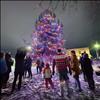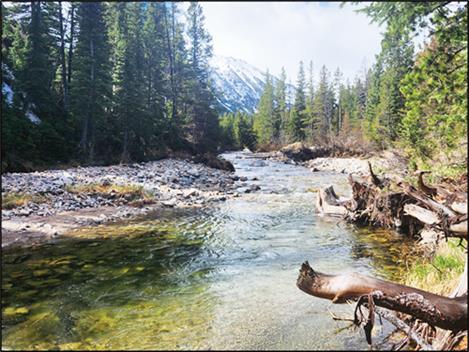More rain needed to improve water supply
Hey savvy news reader! Thanks for choosing local.
You are now reading
1 of 3 free articles.
News from NRCS
BOZEMAN — Summer is just around the corner, and recent weather helped improve the water supply outlook as the 2024 snow accumulation season wraps up in Montana. However, the outlook remains below normal in most locations.
“Last month brought a mix of snow, rain, and sunshine across Montana. While that is not uncommon weather for this time of the year, some locations did not receive the moisture they needed,” said Eric Larson, USDA Natural Resources Conservation Service (NRCS) Water Supply Specialist. The Kootenai, Lower Clark Fork, Jefferson, and upper Madison only received 80-90% of normal precipitation last month. All other basins received above normal precipitation and some of the storm totals were exceptional. Total May precipitation at high elevations in the Flathead and central Montana was 8-13 inches. South central Montana and Wyoming’s Bighorn Mountains received 4-8 inches of precipitation last month, which was above normal for all those locations. Total monthly precipitation was 100-110% of normal in the Upper Missouri near Helena and Upper Clark Fork. All other basins received 115-170% of normal precipitation last month.
Periods of cool weather delayed snowmelt, which combined with snow accumulation, increased snowpack percentages in most basins. The Gallatin, Smith, Judith, Musselshell, Powder, and Tongue basins saw the largest increases and now have near normal to well above normal snowpack at the highest elevations. June 1 snowpack percentages range greatly. They are highest in the Tongue and Powder at over 250% of normal and lowest in the Upper Missouri, Sun, Teton, and Marias at about 5-15% of normal. All other June 1 snowpack percentages range from 70-100% of normal. “Keep in mind snowpack percentages were well below normal most of this season, particularly around May 1 when it peaked for the year. Peak snow water equivalent was about 60-80% of normal at most SNOTEL sites this season and in several cases were lowest on record. Current snowpack percentages are closer to normal than what might be expected because of delayed melt at the highest elevations,” said Larson.
The portion of snowmelt that did not occur during May will now occur in the upcoming months, which is good news as it did improve the short-term water supply outlook for most locations. The greatest improvements occurred in the Powder and Tongue where forecasted streamflow volume for May through July was about 65-75% of normal and is now 120-140% of normal for June through July. The Yellowstone, Gallatin, Madison, and Flathead have a substantial amount of snow remaining at the highest elevations and are now forecasted to have about 80-90% of normal streamflow through July. Forecasts in the Smith, Judith, and Musselshell improved yet are still only forecasted to be about 70% of normal through July. The Jefferson, Sun, Teton, Marias, Upper Clark Fork, and Blackfoot are only forecasted to have about 50-60% normal streamflow through July.
Water supply forecasts for the June through September period improved but not quite as much as the shorter-term forecasts. “Below normal snowpack peak levels this season will likely have an impact on streamflow later this summer. From a water supply perspective above normal precipitation during the summer is almost always welcomed, and that is certainly true this year in Montana. Slower than normal melt of the remaining high elevation snowpack would also help sustain closer to normal streamflows later in the summer,” said Larson.
A full report of conditions on June 1 can be found in the monthly Water Supply Outlook Report available on the Montana Snow Survey website. In addition, real-time snow survey data can be found at: nrcs.usda.gov/montana/snow-survey.
















